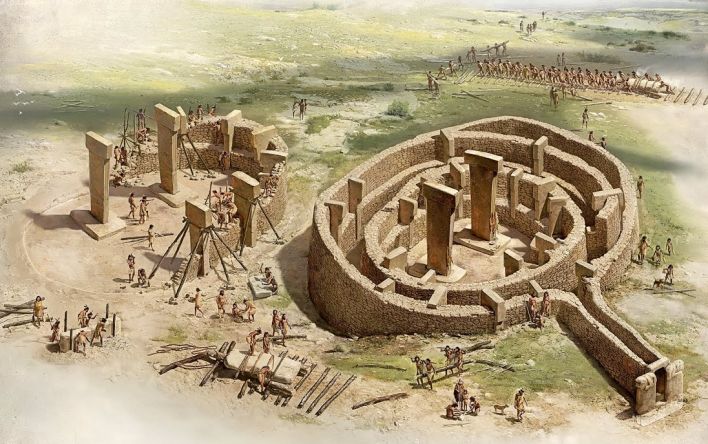Anthropology
Related: About this forumA temple that predates Stonehenge reveals architectural planning may be older than we think
Researchers have discovered part of the mystery behind the construction of the earliest known temple in human history. The Göbekli Tepe complex in southeastern Anatolia, Turkey, is a 11,500-year-old stone structure that predates Stonehenge, according to a news release.
The researchers used a computer algorithm to trace the architectural design, especially three of the complex's monumental round structures, to determine that the pillars were placed in their particular positions on purpose.
"The layout of the complex is characterized by spatial and symbolic hierarchies that reflect changes in the spiritual world and in the social structure," researcher Gil Haklay from the Israel Antiquities Authority explained.
The Göbekli Tepe complex is believed to have been made by hunters and gatherers and has been the subject or archeological debate since its discovery by German archaeologist Dr. Klaus Schmidt in 1994.
"Our findings suggest that major architectural transformations during this period, such as the transition to rectangular architecture, were knowledge-based, top-down processes carried out by specialists," Haklay said. The discovery is important because it was assumed that architectural planning methods such as geometry and floor plans came about much later in history, according to the researchers. In fact, some believe these methods were introduced over 10,500 years ago when hunter-gatherers turned into food-producing farmers.
https://www.cnn.com/2020/05/16/world/gobekli-tepe-building-discovery-trnd-scn/index.html

mr_lebowski
(33,643 posts)
htuttle
(23,738 posts)We build pretty elaborate ones, but there are a lot of the same ideas. Hide the food, protect the young, don't shit where you eat.
Temples are just kind of a meta-version of all that (a house for the god).
left-of-center2012
(34,195 posts)"architectural planning methods such as geometry"?

htuttle
(23,738 posts)I was thinking of 'geometry' in a loosely-defined fashion.
I think.
Chainfire
(17,757 posts)we forget that ancient men were just as smart as we are. The only thing that they were missing was experience. So these folks had math skills, architects, tool makers, masons, engineers and and surplus labor. They must have been secure from food shortages and had their enemies in check.
Looking at the artist depiction makes me wonder if could have been a defensible "storehouse." You can't invest that much labor unless you had a vibrant agricultural society; if you grow it you need to store it or winters in towns get hungry. The columns look like they were placed in such a manner that it could have had a domed, or modified hip timber roof structure.
I wonder that in 3000 years, if future anthropologists, discovering the foundations of football stadiums will suggest that they were "temples." In a way, they could be somewhat accurate in the assumption.
Of course, I am a plumber, not an anthropologist so my wild speculation are only wild speculations based upon ignorance and imagination.